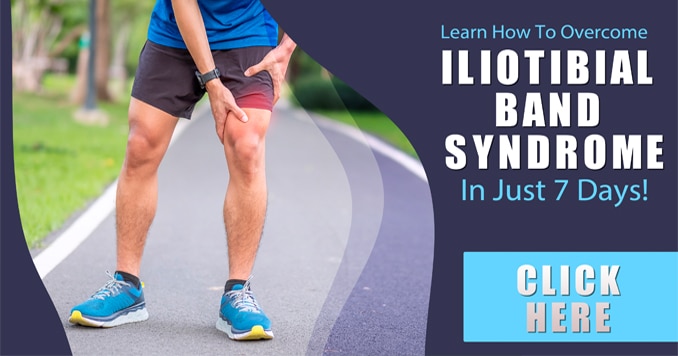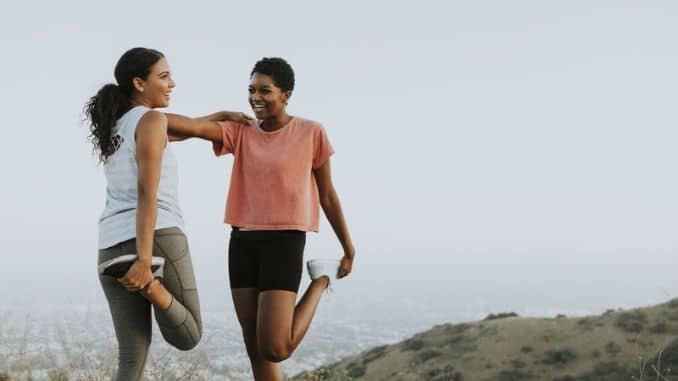
If you like to hike or run, it is important to stretch and do mobility work often. Running and hiking use the same muscles repeatedly, which can lead to injury and pain if you do not keep your muscles and joints healthy. The stretching, strengthening, and mobility exercises in this post will help keep your body strong so you can keep hiking and running, and will also help you recover from workouts.
When you hike or run, you work the muscles in your lower body a lot, especially your hips and thighs. Running and hiking also requires a lot of core strength, which we will address in this post. These exercises are dynamic, meaning that you are moving from one position to another without pausing. This can be a great way to warm up for a workout or to do anytime to loosen up your body and improve your mobility.
You will want an exercise mat, a yoga mat, or other comfortable surfaces to perform these stretches on. You can do these exercises before or after your workout. The first time you do this routine, do each set of each exercise and see how you feel. If you feel good, work up to the recommended sets and repetitions. Do these exercises every time you hike or run and you will feel the difference in your muscles and joints.
1. Plank to Low Lunge
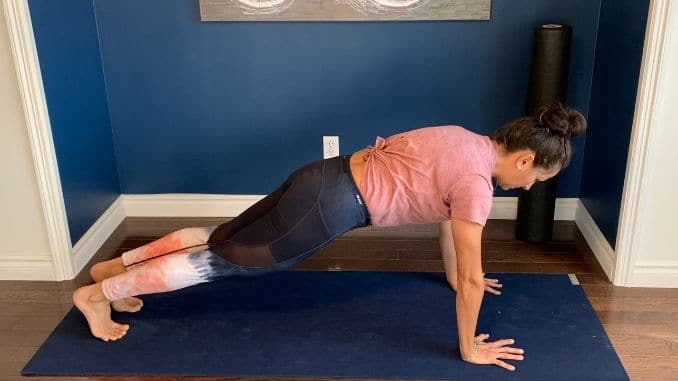 |
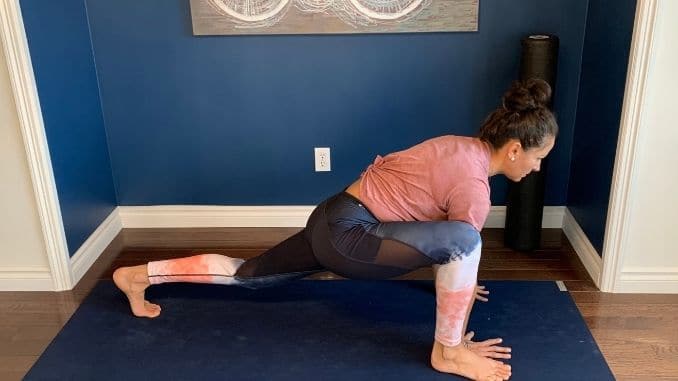 |
Begin in a plank position with your hands on the ground underneath your shoulders and your toes tucked. Keep your head, shoulders, hips, and feet in a straight line. Engage your core by pulling your belly button up towards your spine and not allowing your lower back to round further than its natural curve. Once you feel solid in your plank, step forward with your right foot, placing it on the outside of your right hand. Pause for a moment in this low lunge stretch. You should feel a stretch through the front of the right hip and thigh. Pick up your right foot and return to your plank position. Repeat the movement on the other side. This exercise strengthens your core and increases the mobility in your hips. This is a dynamic movement that will require you to flow from one position to the other. If you have difficulty with this exercise, make sure to check out the modifications below.
Perform 3 sets of 5 repetitions on each side.
Modifications: To make this exercise more challenging, try moving through the positions a little bit quicker. Try inhaling as you move your foot forward into the lunge, and exhaling as you step back to the plank, trying to synchronize the movements with your breath. To make this exercise easier, do a static lunge stretch instead. Perform a lunge in the same way as described above, but stay in this position. If this position is too challenging, use blocks or books under your hands to support yourself. You can also lower onto your back knee, supporting it with a pillow or blanket. Hold the lunge stretch for 20 to 30 seconds, then repeat on the other side.
2. Prone Spinal Twists
 |
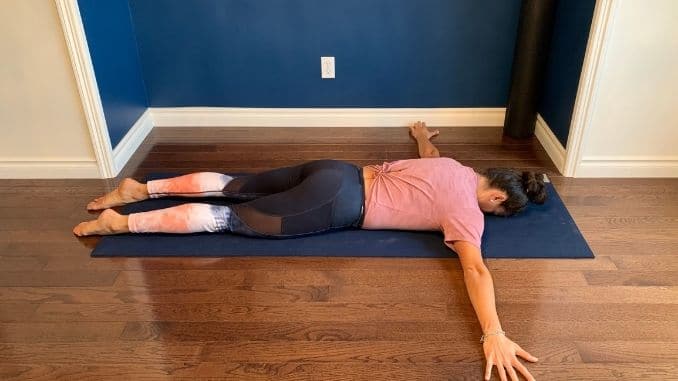 |
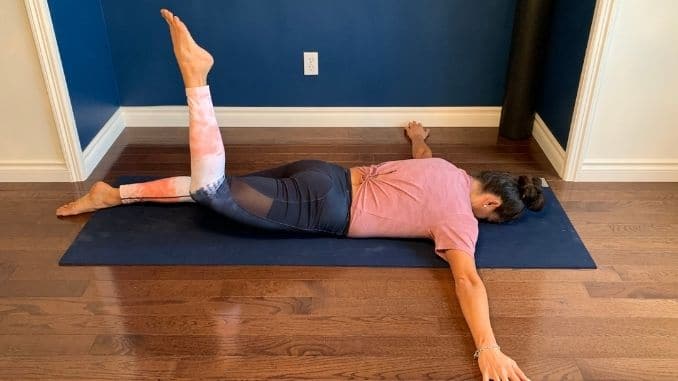 |
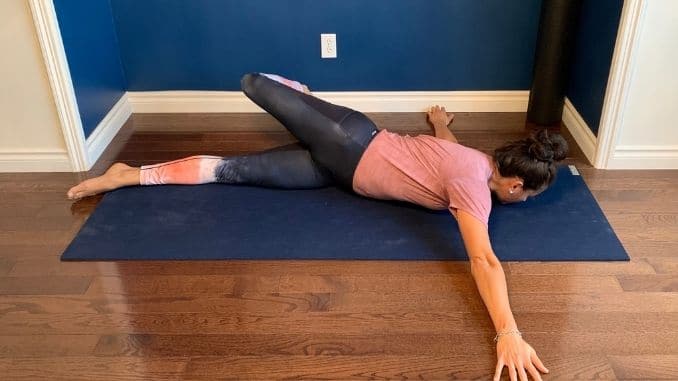 |
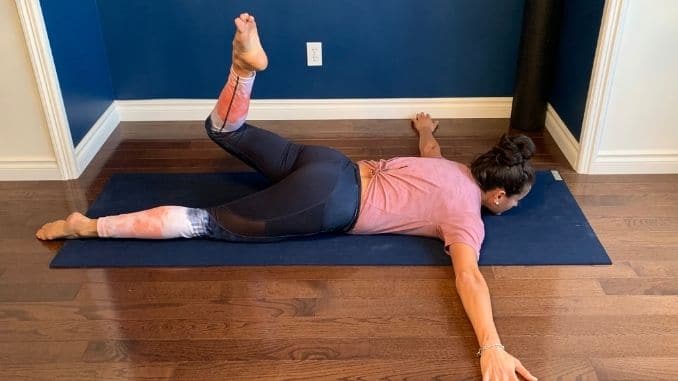 |
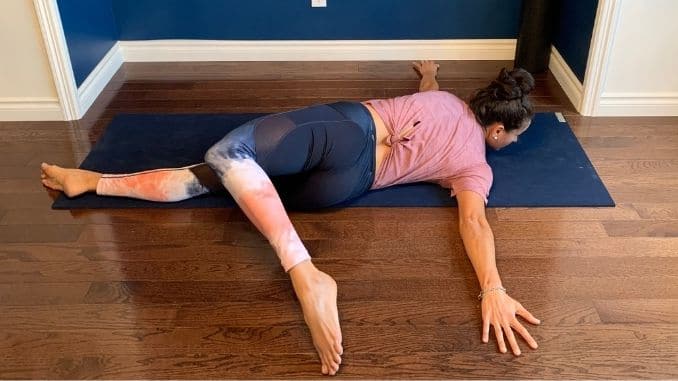 |
This exercise is a variation on a traditional spinal twist that incorporates hip mobility, which is essential for hikers and runners. This is also a dynamic stretch, so you will be moving from one side to the other, not holding any position for too long.
Begin by lying face down (also known as a prone position). Position your arms out at your sides at shoulder height, with your palms down. Bend your right knee to 90 degrees, then lift your leg across your body, over to your left. Your right hip will come up off the floor. Twist as far as is comfortable, keeping your arms on the floor. Pause for a moment, then return to the center position. Bend your left knee and repeat the stretch on the other side.
Perform 3 sets of 5 repetitions on each side.
Modifications: To make this exercise more challenging, try to tap your toe down on the floor each time you twist. To make this exercise easier, perform a traditional spinal twist from your back. Lie on your back with your knees bent and your feet slightly wider than hip-distance apart. Slowly drop your knees to one side. You can support your knees with pillows or blankets if needed. Hold this position for 20 to 30 seconds and repeat the movement on the opposite side.
3. Knee to Elbow
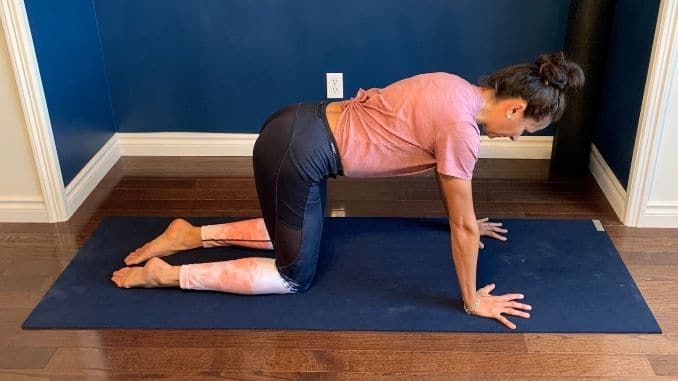 |
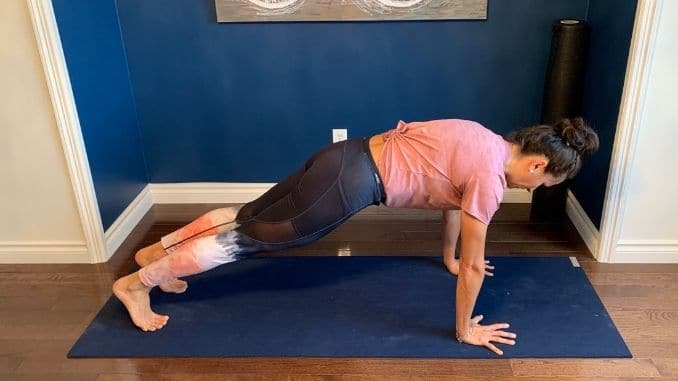 |
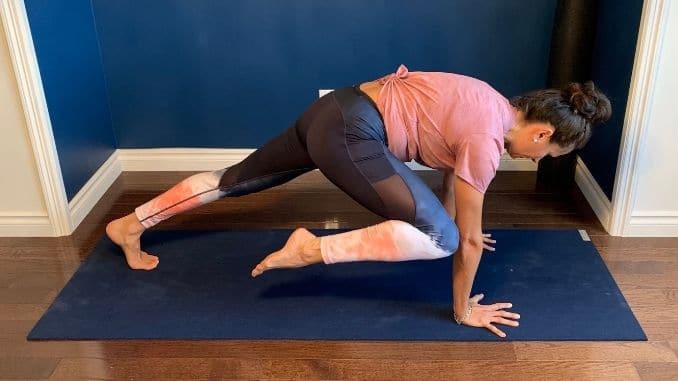 |
This exercise focuses mainly on strengthening the core, while also working on hip mobility. A strong core will help prevent injuries while you hike or run by encouraging good form.
Begin in the plank position with your head, shoulders, hips, and feet in a straight line. From here, tuck your right knee in toward your right elbow. Step back with your right foot and repeat the movement on the left side. Try to keep your entire body in alignment while you move your leg.
Perform 3 sets of 5 repetitions on each side.
Modifications: To make this exercise more challenging, lift your knee as high as you can towards your armpit when you bring it forward. Hold for a moment with your knee up toward your armpit. To make this exercise easier, just bring your knee as far forward as you can, even just taking one foot off the mat at a time. You can also perform this exercise from a plank with your knees on the ground, or from all fours.
4. Side Body Openers
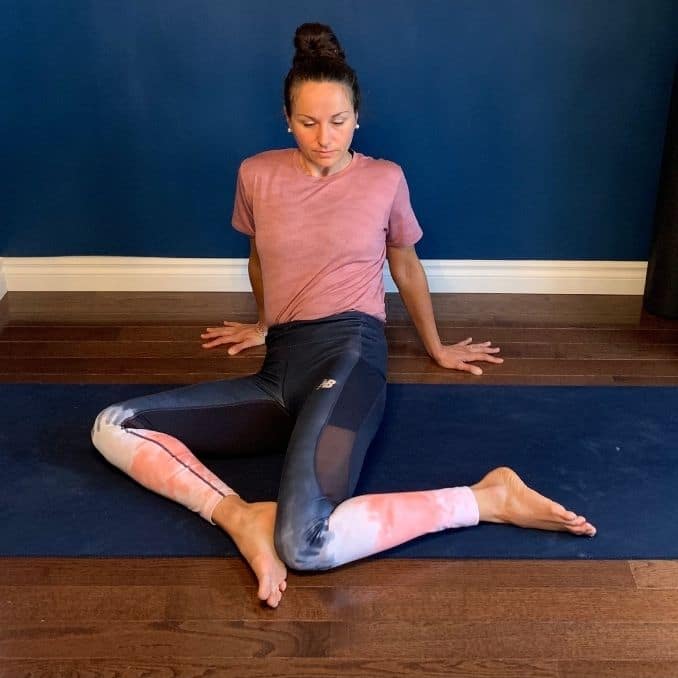 |
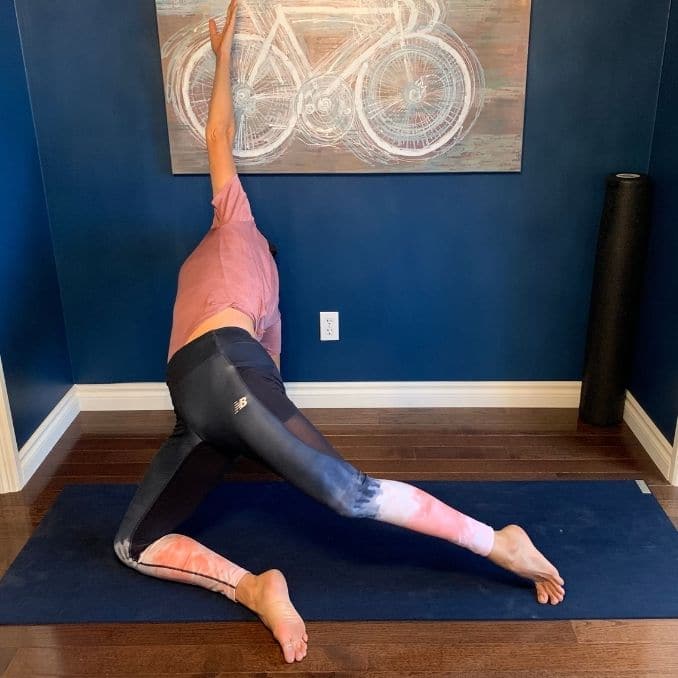 |
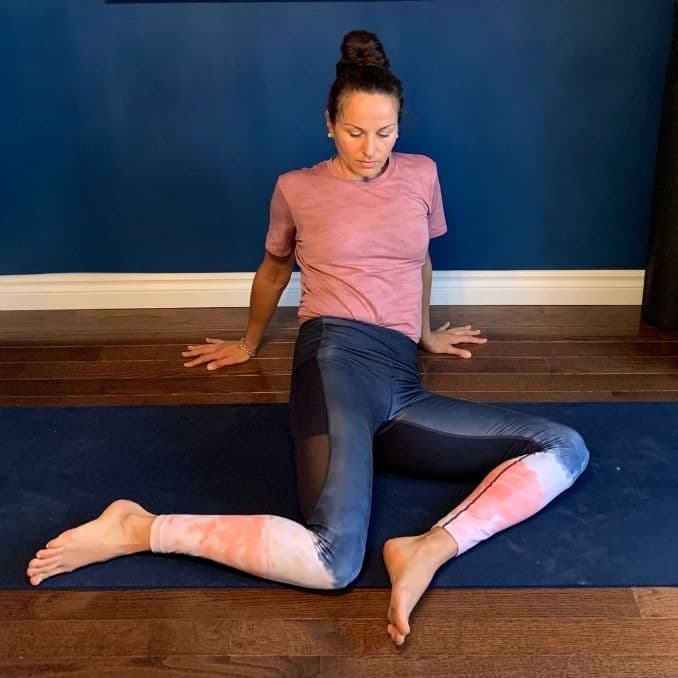 |
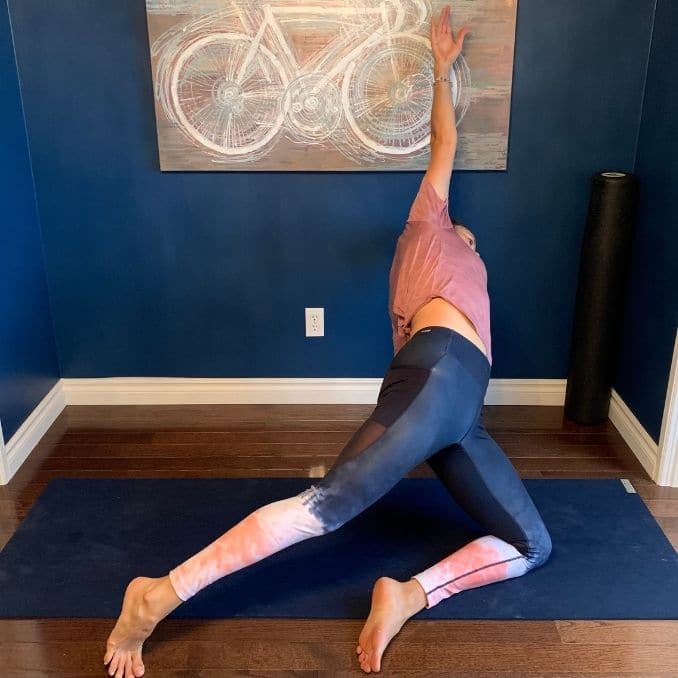 |
This is a great exercise for mobility in the hips and shoulders. You will be focusing on opening up the font of the body, which can get tight from sitting, and even activities such as running and hiking.
Begin by sitting on the floor, supporting yourself with your arms behind you. Extend your legs in front of you, then bend both knees to 90 degrees. Allow your knees to fall to the right. Support yourself with your right shin and your right arm, and lift your hips off the floor. Reach up and behind you with your left arm, stretching the left side of your body. Return to the center position and repeat the movement on the other side.
Perform 3 sets of 5 repetitions on each side.
Modifications: To make this exercise harder, really think about pressing your hips forward as you lift yourself, intensifying the stretch. To make this exercise easier, work on simply dropping your knees from side to side, eliminating the upper body movements.
We hope you try out these stretches and enjoy them. The more you take care of your body between your runs or hikes, the better your body will feel and perform.
Finally heal your IBS safely and naturally! Learn the best way to treat your Iliotibial Band Syndrome here.

